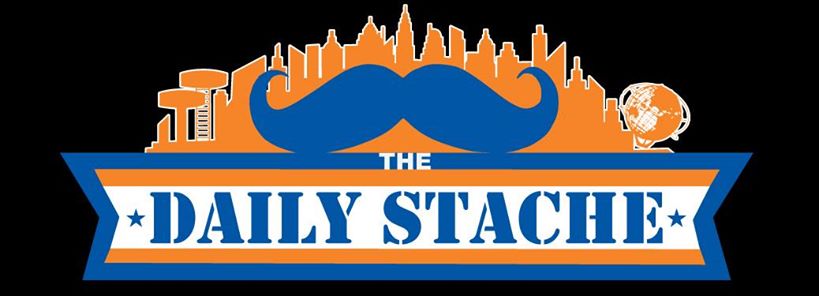 Even with Ike Davis’ proclivity for walks over the past few days, his season has been…well…horrible. Every Met fan knows the .163 Batting Average and has witnessed the uninspired flailings at breaking balls in the dirt but is that the whole story? Is there a tangible reason why Ike Davis is hitting more like Bette Davis? Because the Stache believes in going deeper, let’s look at a few advanced stats (or sabrmetrics) relating to Ike Davis to see if we can better understand Ike’s 2012 doldrums.
Even with Ike Davis’ proclivity for walks over the past few days, his season has been…well…horrible. Every Met fan knows the .163 Batting Average and has witnessed the uninspired flailings at breaking balls in the dirt but is that the whole story? Is there a tangible reason why Ike Davis is hitting more like Bette Davis? Because the Stache believes in going deeper, let’s look at a few advanced stats (or sabrmetrics) relating to Ike Davis to see if we can better understand Ike’s 2012 doldrums.
1. BABIP – Batting Average on Balls in Play (For a detailed explanation of this stat click here). Basically BABIP (catchy huh?) measures the amount of balls in play that fall for hits. The league average is around .300 or 30 percent of all hits. Obviously there are a lot of variables that go into BABIP (skill of defense, luck, talent level) but what makes it useful is its often a barometer for whether a hitters performance is sustainable or not.
Davis’ BABIP in 2010 was .321 or above average. In 2011 over the course of 36 games Davis racked up a .344 BABIP which is excellent. In 2012 Davis’ BABIP has been a ghastly .207. .207! That’s a incredibly low number. Some of that could be attributed to an inconsistent swing and some could be contributed to better defensive shifts employed against him but even then the number is extremely low. The silver lining of this is that BABIP has a tendency to drift towards the mean (.300) over the course of the year. Lady Luck will simply not be this hard on Davis all season. If he continues to get a chance to play and finds some confidence his hits should start finding some green grass.
2. UZR – Ultimate Zone Rating (For a detailed explanation click here) UZR is a defensive metric which uses play-by-play data to estimate each fielder’s defensive contribution in theoretical runs above or below an average fielder at his position in that player’s league and year. Bit of a mouthful but it gives a good look at whether a player positively or negatively impacts a team defensively. (And yes Jeter does terribly in this stat).
One of the arguments made to keep Davis in the lineup is his talent defensively. In 2010 Davis posted a 10.1 UZR. So he roughly saved about 10 runs that season. This is a pretty good total for a First Baseman, a position which is penalized for being easier than others. In 2011, in a short period, he posted a 1.9. Anytime your fielder is in the positive it means he’s an above average fielder. So far in 2012 Davis has posted a -2.4 UZR. While that is slightly below average its still not a bad number. Also important is UZR’s are particularly useful over larger sample sizes. Davis’ career average is a sturdy 9.6. So the numbers back up what we all have been claiming. Ike Davis is an above average defensive first baseman.
3. K%/BB% – Strikeout Percentage and Walk Percentage(detailed explanation is here) These are pretty straightforward. K% is the percentage of plate appearances that result in strikeouts while BB% is the same just for walks. They are useful stats for seeing how a player is doing compared to the league and his past. An important point to remember is Davis is a power hitter. Power hitters tend to strikeout and walk more.
Let’s look at K’s first. In 2010 Davis struck out 23% of the time. Not a great percentage but not uncommon for a power hitter. In his abbreviated 2011 season Davis struck out 20.8% of the time. Not a ton of plate appearances but a sign that he was improving. In 2012 Davis has struck out 28.9%. That is bad. Almost a third of the time Davis is striking out. Way too high even for a power hitter. This could point to Davis” frustration and his attempt to swing his way out of a slump. Either way its not too encouraging.
Let’s look at walks. In 2010 Davis walked 12% of the time. That’s an excellent percentage and exactly what you want from a middle of the order hitter. 2011 was solid as well at 11.4%. 2012 has seen that number drop to 8.8% which is right around league average. This confirms what we thought. Davis is exacerbating his slump by chasing balls out of the strike zone. Even if pitchers have cracked the code on Davis, his tendency to chase breaking balls is killing his chance of getting on base. Hopefully the 3 walks in the last 2 games are a sign of him being patient in the face of his struggles.
4. Batted Ball Percentages – (For a detailed breakdown read this) This one is simple as well. We’ll take a look at Davis’ Line drive, Fly Ball and Groundball percentages. Line Drives produce the most runs per out and are a sign of a locked in hitter (David Wright has a high LD%). Power Hitters tend to hit more fly balls. Too many ground balls is a bad thing unless the hitter is known to be speedy and leg out infield hits.
Davis’ split for 2010 was 16.4%LD/43.1%GB/40.5%FB. His 2011 numbers are virtually identical. Davis hits a lot of fly balls so these numbers are respectable. His Line Drives are a little below league average while fly balls are a little above league average. This year Davis’ split is 18.2%/47.9/33.9%. The numbers that jump out here are the elevation in ground balls and the serious decline in fly balls. His impatience at the plate is leading to him getting out in front and rolling over to the right side, right into the shift employed against him. Interestingly, his HR per flyball percentage has stayed the same so it definitely seems that patience at the plate is the root problem here. Ike needs to trust himself and elevate the ball more like he has in the past. If he starts to hit more fly balls the numbers dictate that a few of those will definitely leave the park.
Conclusion
After looking at the numbers one thing is definitely clear. Ike Davis is pressing. He’s striking out more, walking less, grounding out more, failing to elevate the ball, but still managing to play solid defense. Also a factor is how incredibly unlucky Davis has been. His extremely low BABIP is only compounding his struggles and pushing away from the principles and talents which got him to the major leagues. At this point, deep into the season, it might benefit Davis to go to the minors and face weaker pitching so that he can begin to trust his swing again and stop watching his putrid batting average fall even lower. A few weeks down there could provide a fresh start upon his return and could bring the confidence and skill needed to over come his bad luck. All in all though, its definitely not time to give up on Davis. Whether he goes to the minors or not, his season will definitely improve at some point once he rediscovers the player that he is and lets go of the impatience holding him back.




